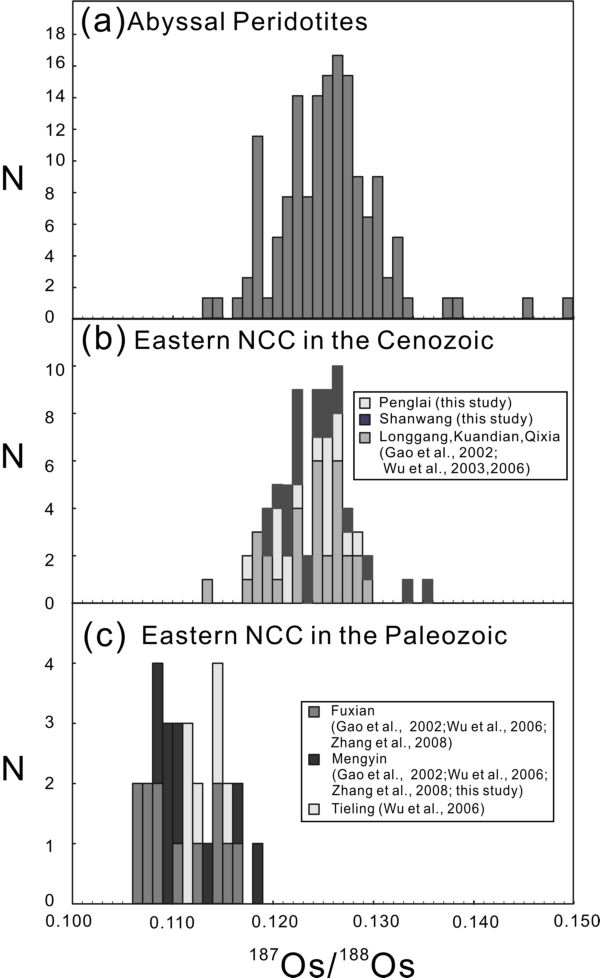Journal of Petrology, 50: 1857-1898
Temporal Evolution of the Lithospheric Mantle beneath the Eastern North China Craton
Zhu-Yin Chu, Fu-Yuan Wu, Richard J. Walker, Roberta L. Rudnick, Lynnette Pitcher, Igor S. Puchtel, Yue-Heng Yang and Simon A. Wilde
Abstract

It is now well established that lithospheric thinning of the eastern North China Craton (NCC) occurred during the Phanerozoic. The cause and extent of the thinning, however, remains highly debated. In this study, mantle xenoliths from the Paleozoic Mengyin kimberlites, along with xenoliths from the Cenozoic Penglai and Shanwang basalts in Shandong Province, are investigated via traditional petrographic and elemental, Sr–Nd–Hf–Os isotopic and platinum-group element (PGE) analyses. Late Archean Os model ages of c. 2·5 Ga for the Mengyin peridotites provide confirmation that refractory, Archean lithospheric mantle existed beneath the easternmost portion of the NCC during the Paleozoic. Some Paleoproterozoic lithospheric mantle fragments may also be present in the Mengyin xenolith suite. In contrast, the spatially associated Penglai and Shanwang peridotite xenoliths are more fertile, and have Sr–Nd isotopic compositions similar to the depleted mantle. They differ dramatically from the Archean peridotites sampled by the Mengyin kimberlites. Osmium model ages for single samples range from mid-Proterozoic to modern, similar to variations observed in Phanerozoic convecting upper mantle as sampled by modern abyssal peridotites. This suggests that the present lithospheric mantle beneath the eastern NCC formed in the Phanerozoic, despite the fact that Os model ages extend back to the Proterozoic. Some samples from the Penglai suite yield Proterozoic Lu–Hf clinopyroxene mineral isochron ages that are consistent with the Os model ages, suggesting that Hf isotopes in modern convective upper mantle can preserve evidence for ancient melt depletion, similar to Os isotopes. Our results are consistent with thinning of the eastern NCC as a result of foundering of the deep crust and lithospheric mantle, but are inconsistent with stretching or refertilization models, as remnants of Archean mantle are expected to be present in these scenarios. The match between 187Os/188Os in convective upper mantle and the eastern China lithopspheric mantle also precludes models that seek to explain the present lithosphere as being due to lateral translation of Proterozoic lithosphere.
|